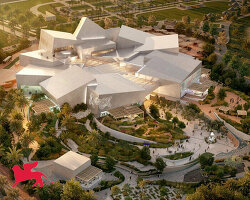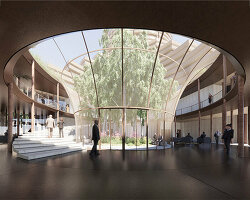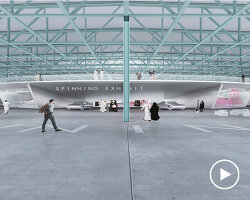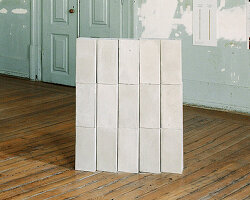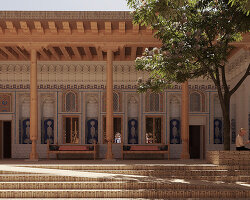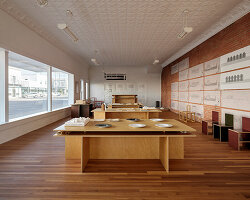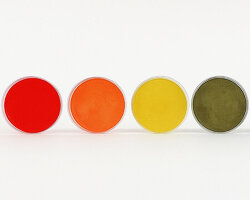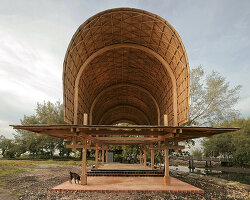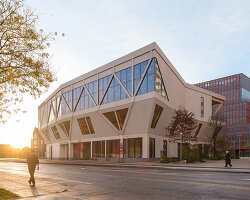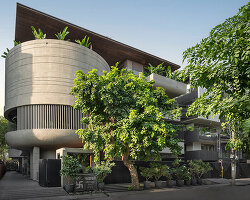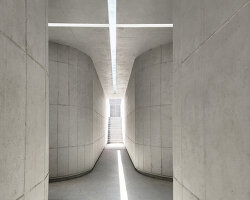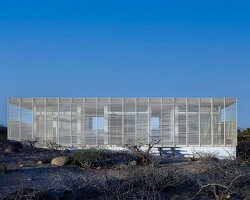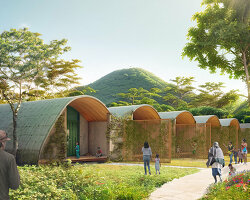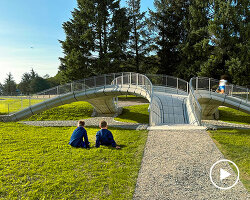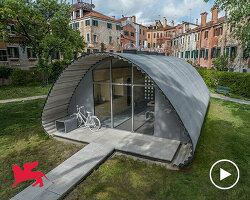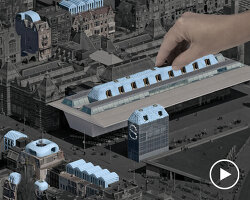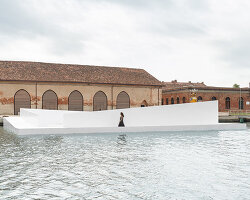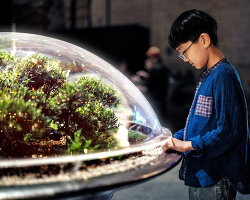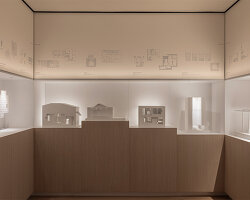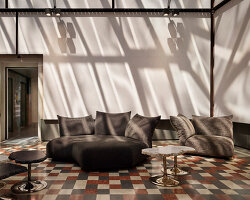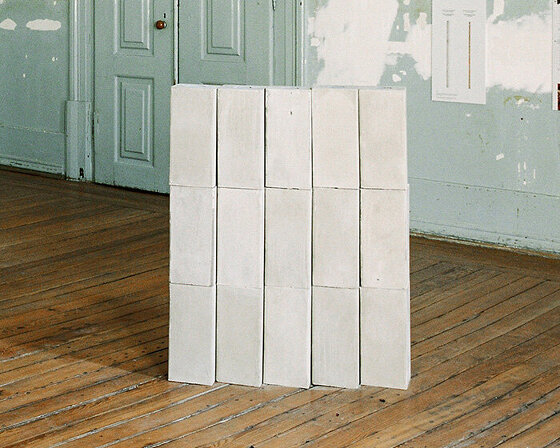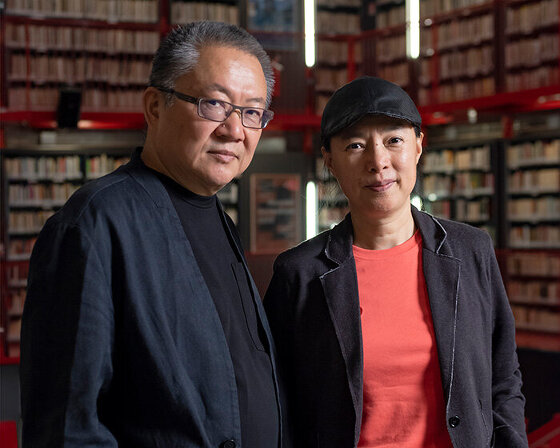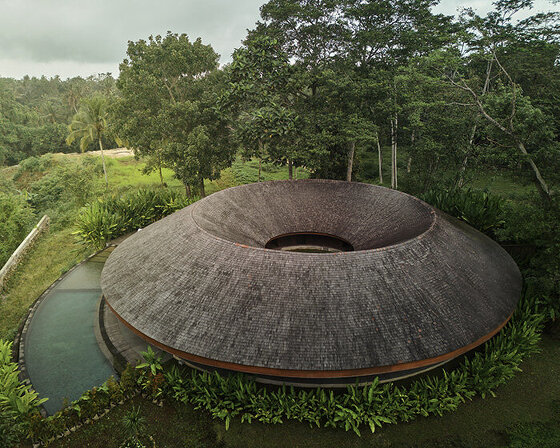A Venice biennale Prototype with Global Implications
In a quiet Venetian courtyard, a concrete structure stands as the result of an experimental collaboration between Holcim and ELEMENTAL. At first glance it’s austere, shaped as a blocky sectional module of precast panels. Most important is its material of biochar concrete and the story it tells. At the 2025 Venice Architecture Biennale, sustainable construction firm Holcim and Chilean architecture studio ELEMENTAL unveil a full-scale prototype that demonstrates a new way of building which resists the choice between climate action and social housing. Instead, it proposes a method to both sequester carbon and propose answers to urgent housing needs. designboom met with ELEMENTAL founder Alejandro Aravena in Venice to learn more about the collaborative project.
‘Whoever comes with solutions and technological developments that lower the carbon footprint of building is welcome,’ Aravena tells designboom in an interview. This collaboration with Holcim emerged from years of overlapping commitments to climate responsibility and socially-responsive architecture. Aravena, a Pritzker Prize-winner, recalled his team’s first encounter Holcim during post-earthquake reconstruction efforts in Chile. ‘It was pragmatic: people need places to live, and they’ll build them whether or not governments or markets are ready. This project explores what happens if we meet that inevitability with better tools.’
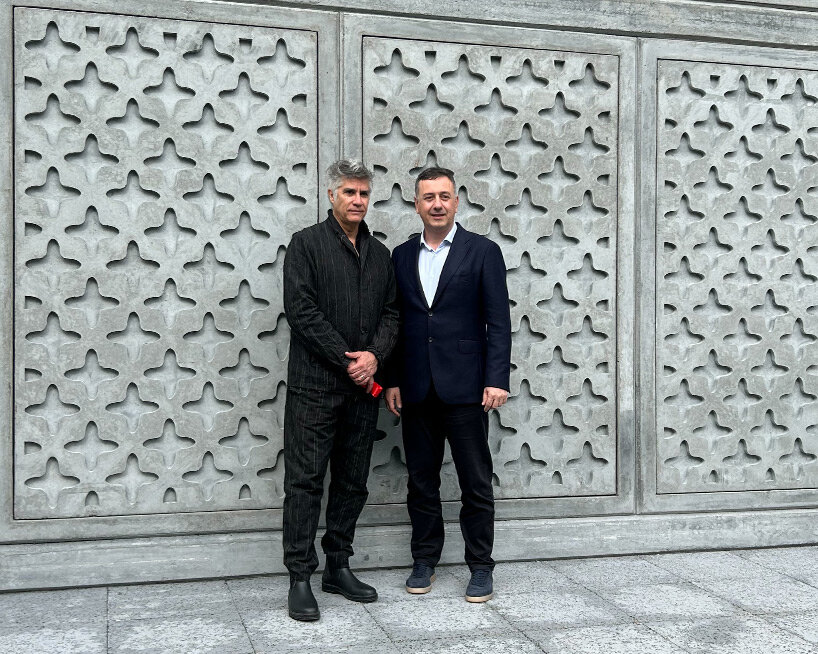
Alejandro Aravena (Founder, ELEMENTAL), Miljan Gutovic (CEO, Holcim) | image © designboom
elemental notes architecture’s human-centric process
The prototype on display at the 2025 Venice Architecture Biennale is a deceptively modest proposal by Holcim and ELEMENTAL. It is a structural sanitation unit that addresses core needs — water, shelter, and infrastructure — through an expandable frame. This is ‘incremental design,’ a method pioneered by ELEMENTAL in which housing is conceived as a process over a finished product. ‘You have to reframe your role as an architect,’ Aravena explained. ‘It’s not about control. You start the thing, but then you have to let it go.’ According to Alejandro Aravena, the role of the architect is to provide a sturdy beginning. He recognizes the inevitability of self-construction, especially in the Global South, where most new square-meters are built by individuals, not design studios.
‘In most developing countries, public housing is also property. It’s the biggest transfer of public money to private families,’ Aravena noted. ‘If we can help it gain value by being adaptable, expandable, better placed, it becomes more than shelter. It becomes an economic investment for its owners and occupants.’ The structure in Venice reflects decades of this thinking. ELEMENTAL’s earliest incremental homes tripled in value by allowing for self-built expansion.
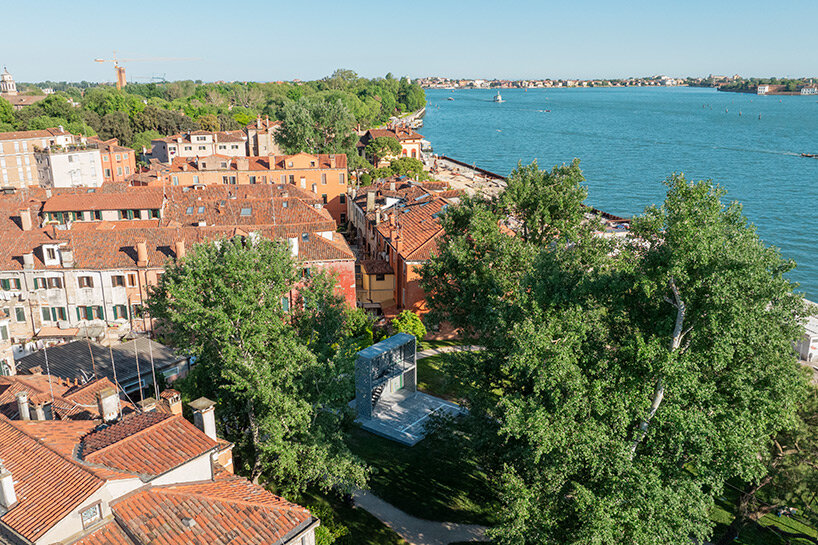
Holcim and ELEMENTAL debut a carbon sink housing prototype at the Venice Biennale | image © Celestia Studio
carbon neutrality through holcim’s biochar concrete
Aside from the process, the Venice Architecture Biennale display is a celebration of a new material logic by Holcim and ELEMENTAL. At its heart is the construction company’s new carbon sink technology, which introduces into concrete a charcoal-like material called biochar, which is derived from organic matter. Biochar traps carbon permanently, preventing its release into the atmosphere at end of life. According to the team, one kilogram of biochar can prevent up to three kilograms of carbon emissions. What matters is that it performs with no compromise. It’s not weaker, not slower, not more expensive. Applied to cement, mortar, and concrete, this biochar formulation creates what Holcim calls ‘net-zero concrete,’ here used with 100% recycled aggregates in a closed-loop construction process.
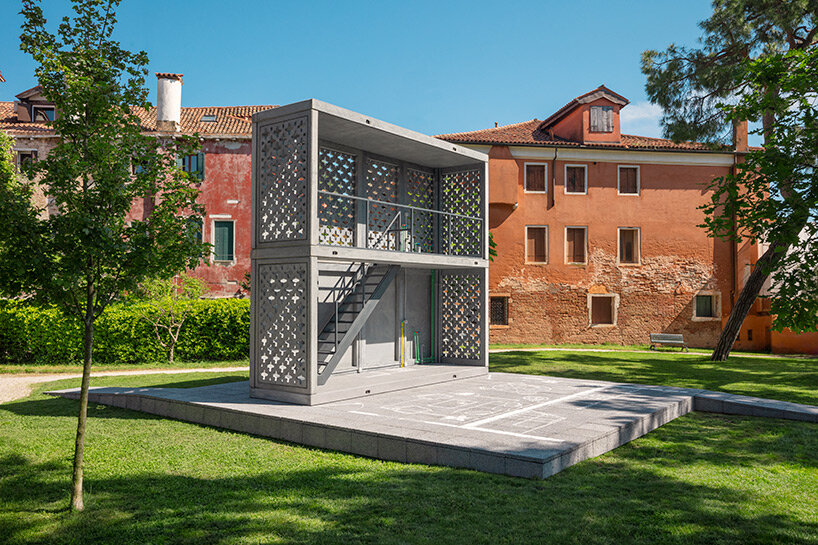
Holcim’s biochar concrete sequesters carbon while maintaining full performance | image © Celestia Studio
‘Normally, the world moves by example,’ Aravena tells designboom, describing his optimism for the project’s impact. ‘When we proposed our first project in 2003, people said it wouldn’t work. Too idealistic. Too expensive. Too slow. So we built it. Then we built it again, in different climates, on flat land, on slopes. The skepticism faded.’ This prototype is similarly direct. It is a built object, not a rendering or a speculative diagram. ‘You can’t argue with a real thing,’ Aravena continues. ‘Some people will find excuses, but others, especially policymakers and engineers, will see that there’s no technical reason not to do it.’
For both Holcim and ELEMENTAL, the project is not disruption for disruption’s sake, but a response to the realities of the built world. ‘Forget utopia. What’s pragmatic is that people will keep building,’ Aravena reflects. ‘So let’s make what they’re building work for them, for the environment, for future generations.’ That vision echoes in the rough concrete shell by the canal. In a year when the Biennale theme circles back to ‘Time Space Existence,’ this prototype quietly reframes each: time as carbon accounting, space as participatory infrastructure, existence as inhabitation with agency.
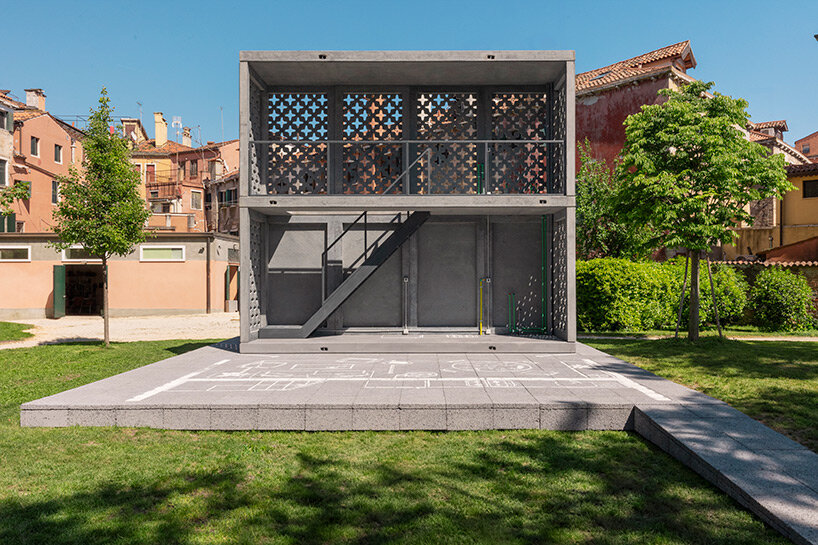
ELEMENTAL’s incremental housing approach empowers residents | image © Celestia Studio

the prototype addresses basic needs with a precast core designed for rapid deployment | image © Celestia Studio
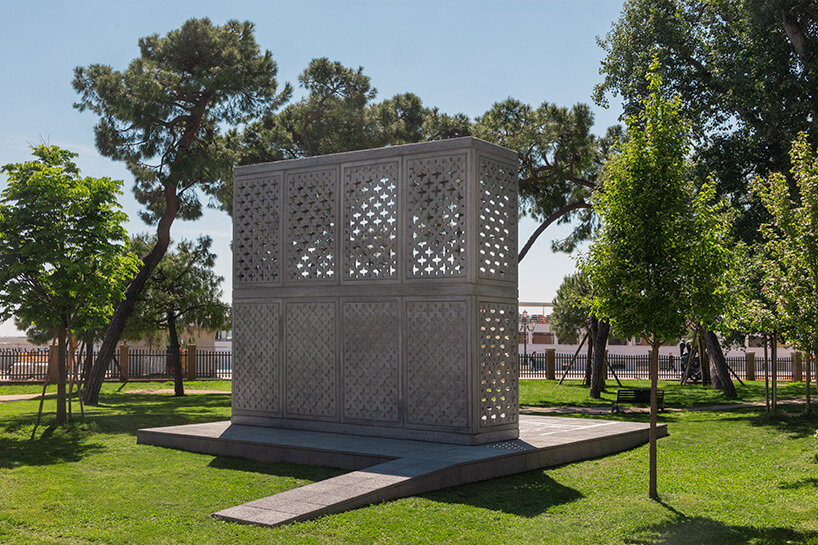
Aravena explains that most housing is self-built and must be treated as part of the solution | image © Celestia Studio

recycled aggregates and net-zero biochar technology reduce environmental impact | image © Celestia Studio
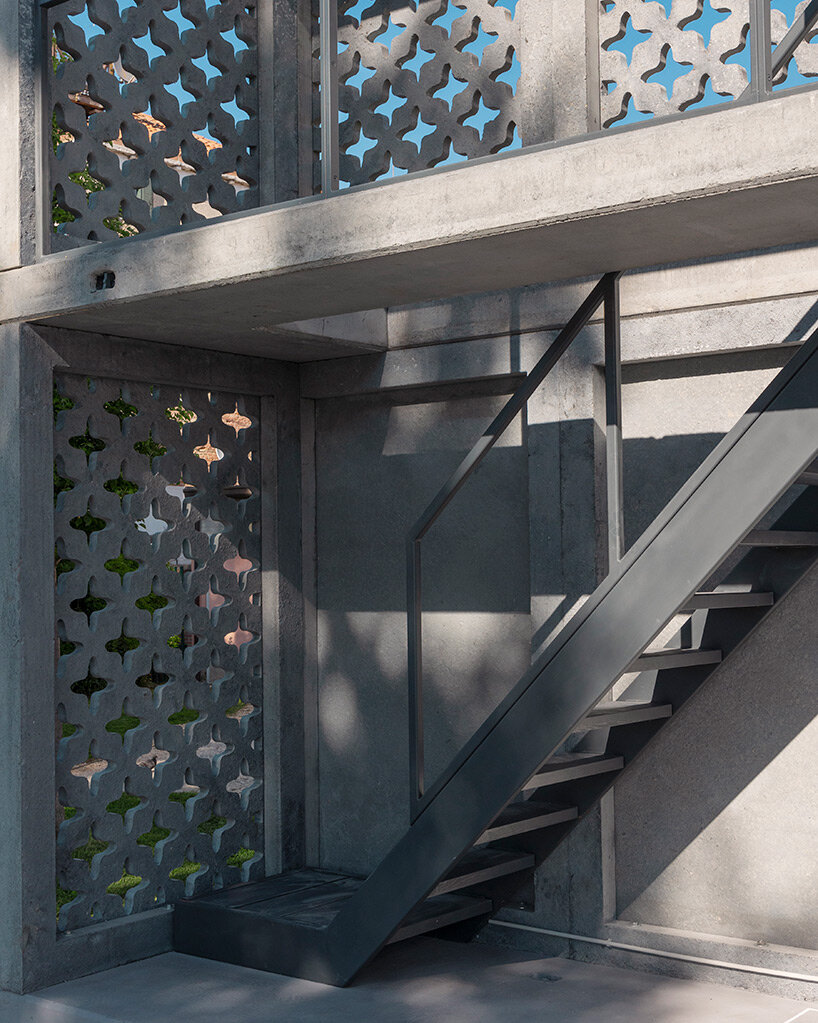
Aravena hopes the project will serve as an inspiring, real-world example | image © Celestia Studio
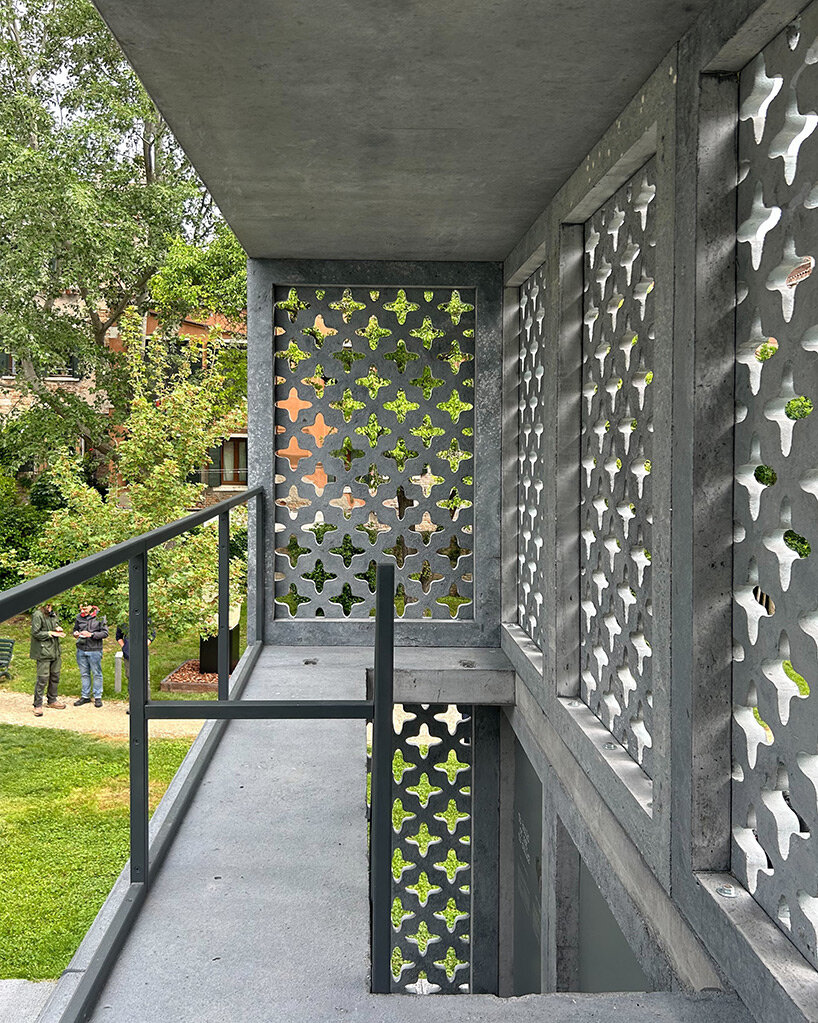
the goal is not to control the process but to channel the energy of those who build | image © designboom
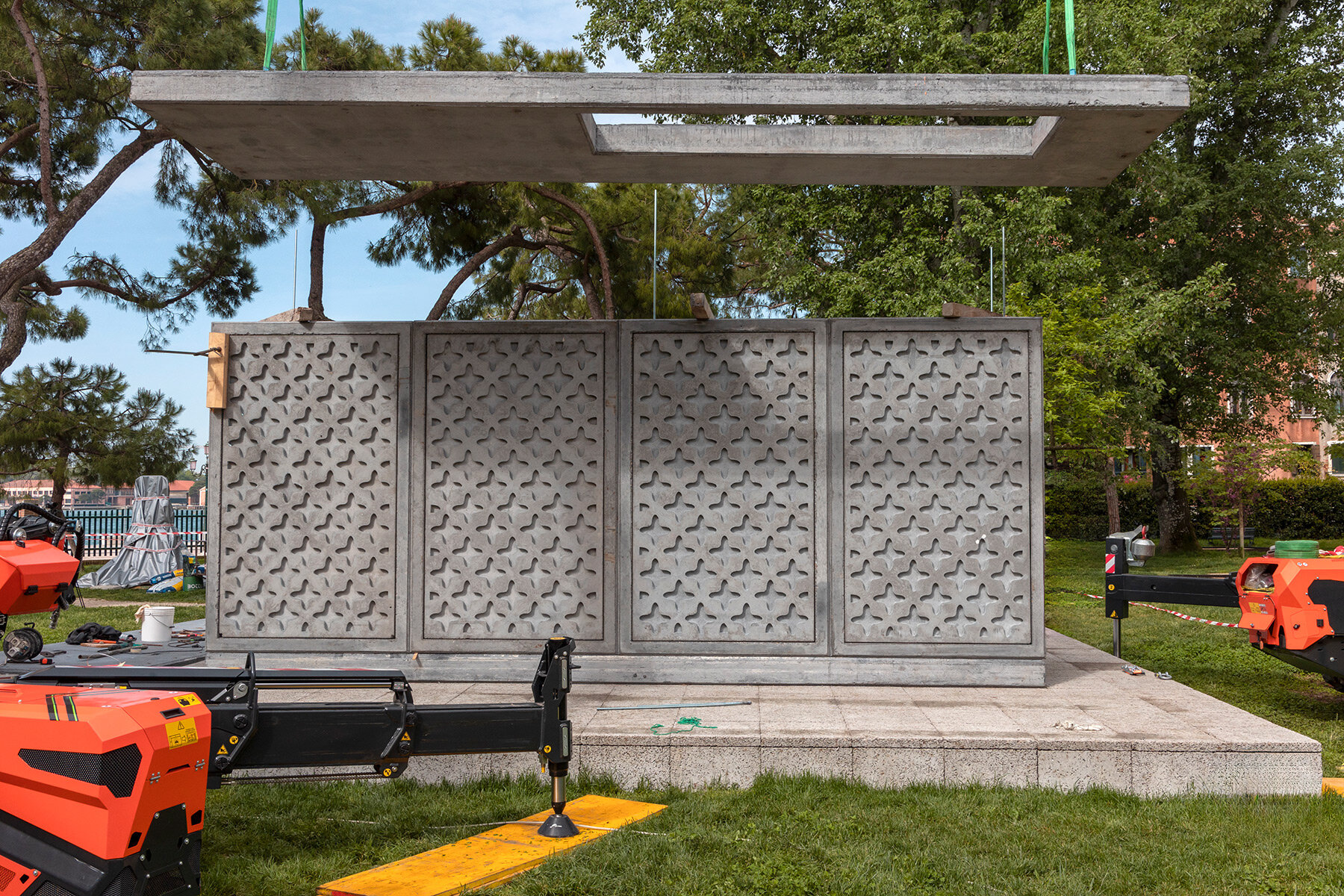
Holcim and ELEMENTAL will exhibit the carbon sink unit in venice through November | image © Celestia Studio
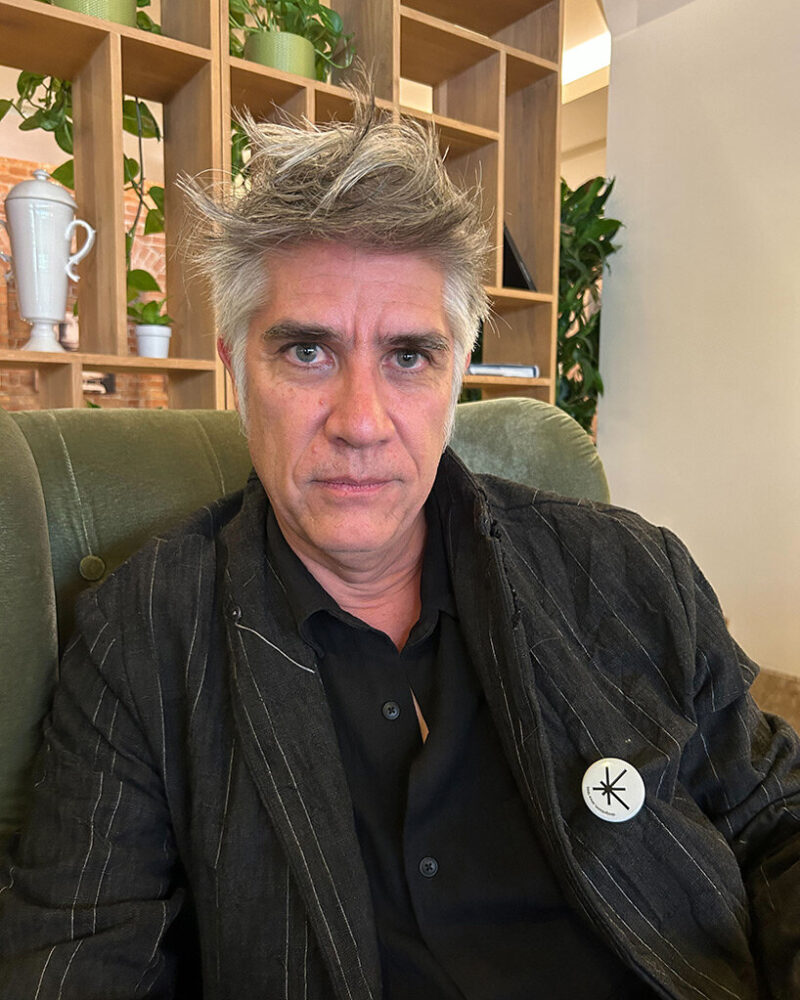
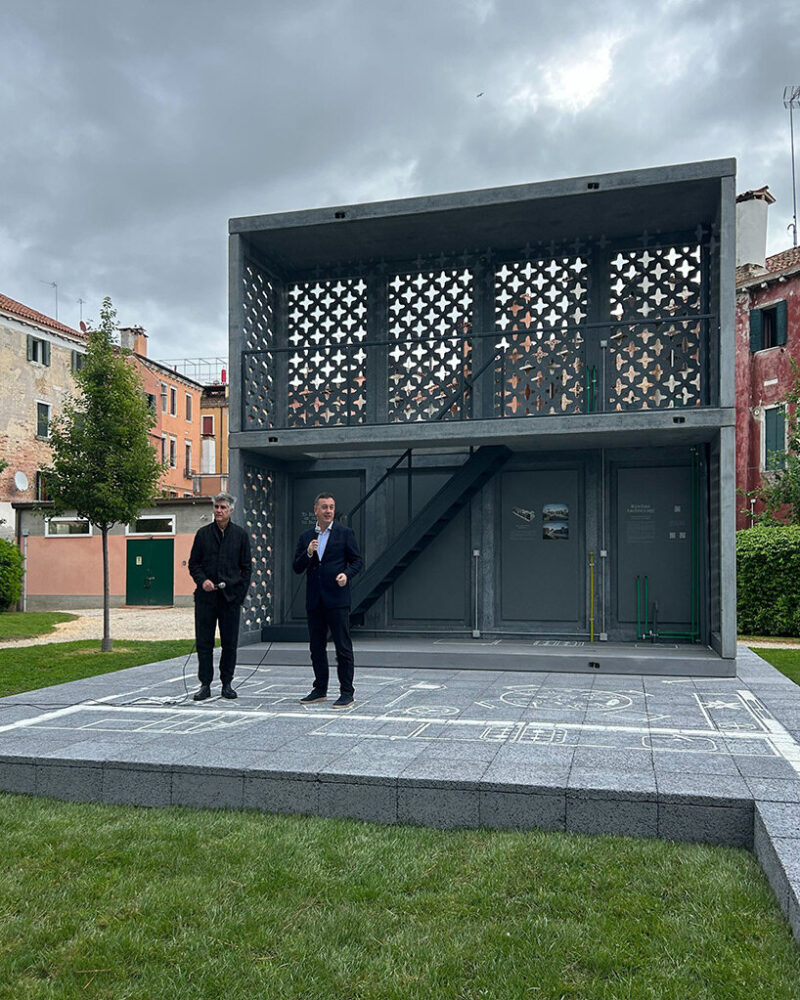
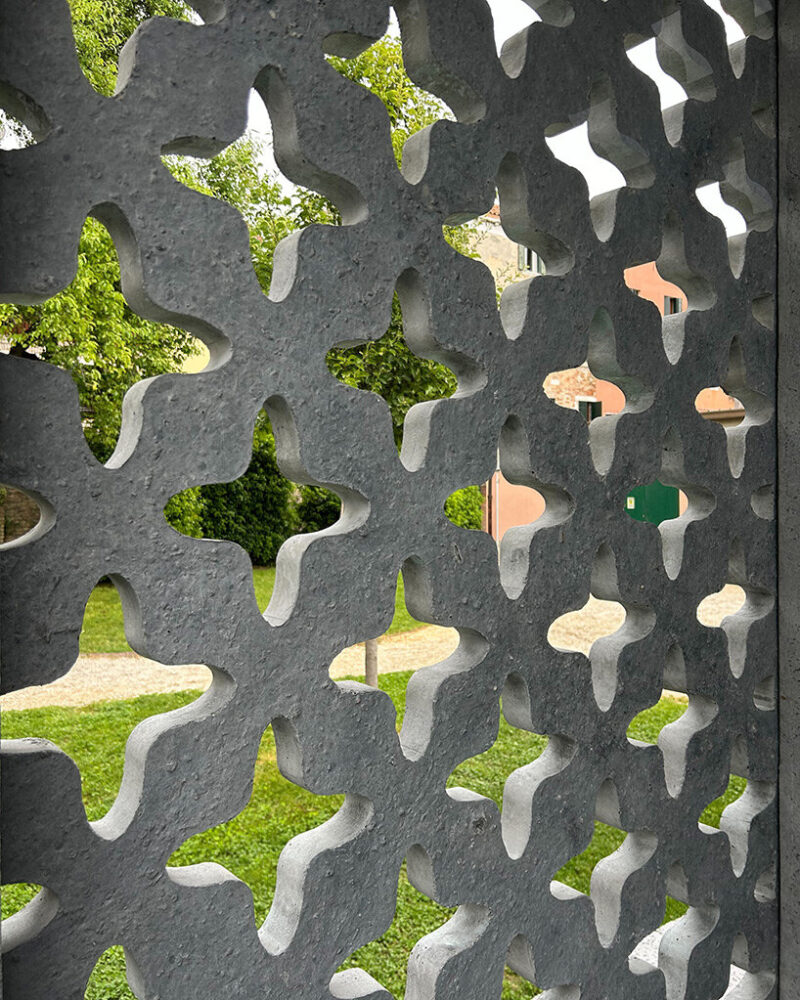
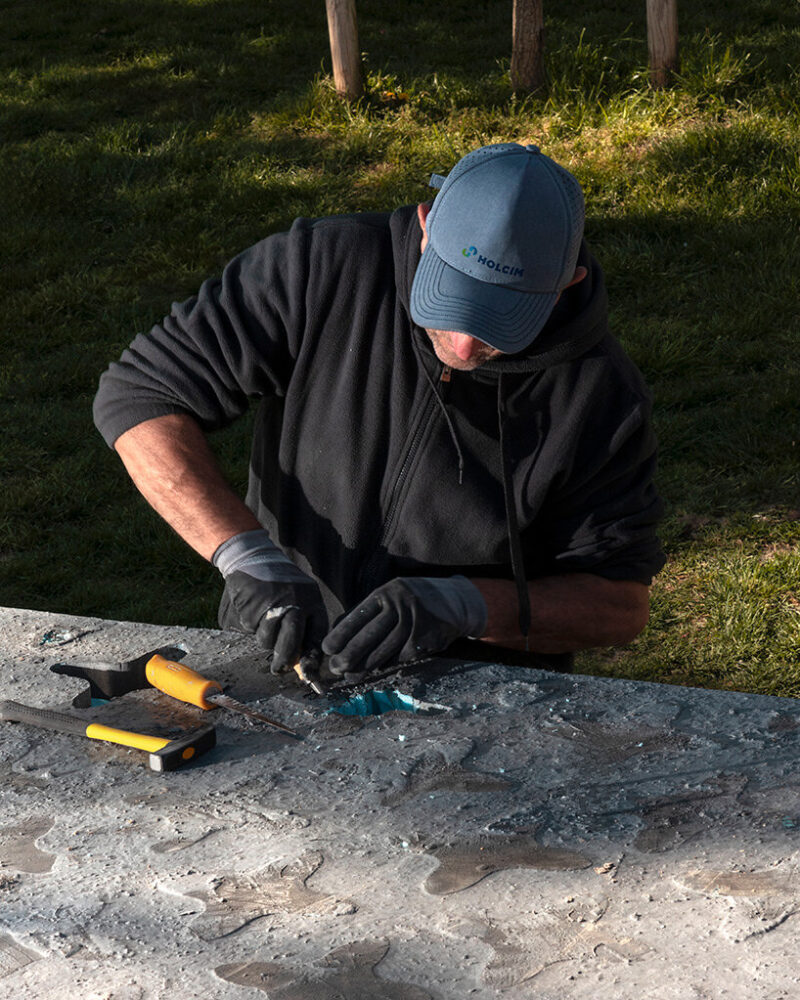
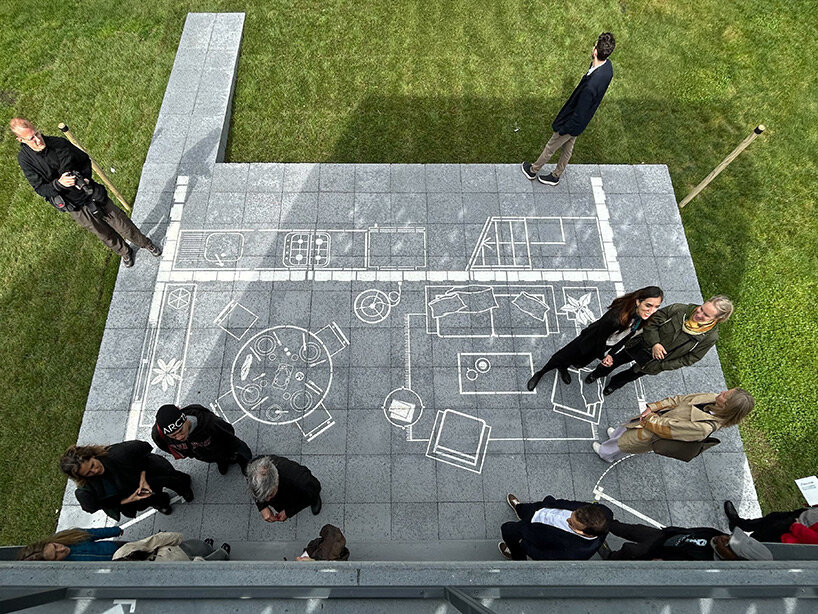
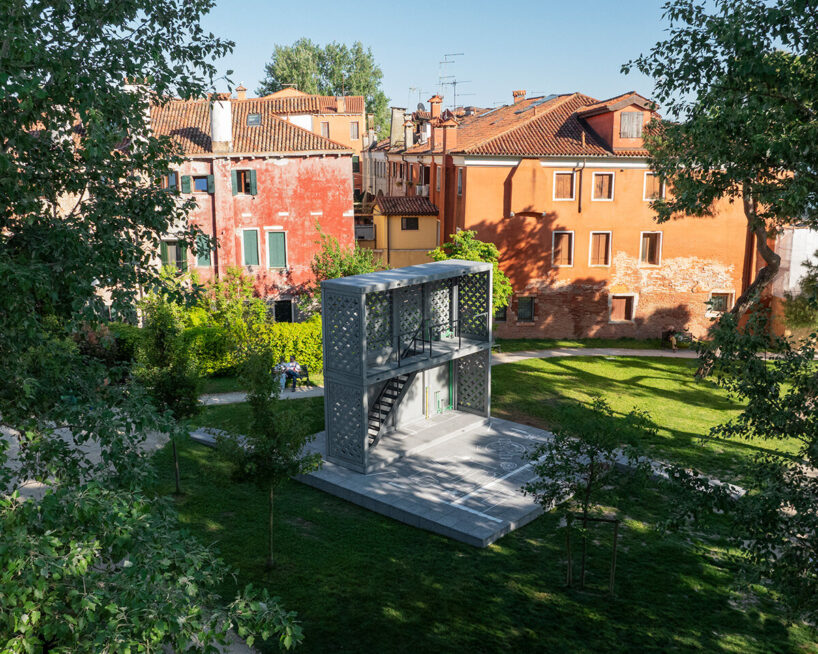
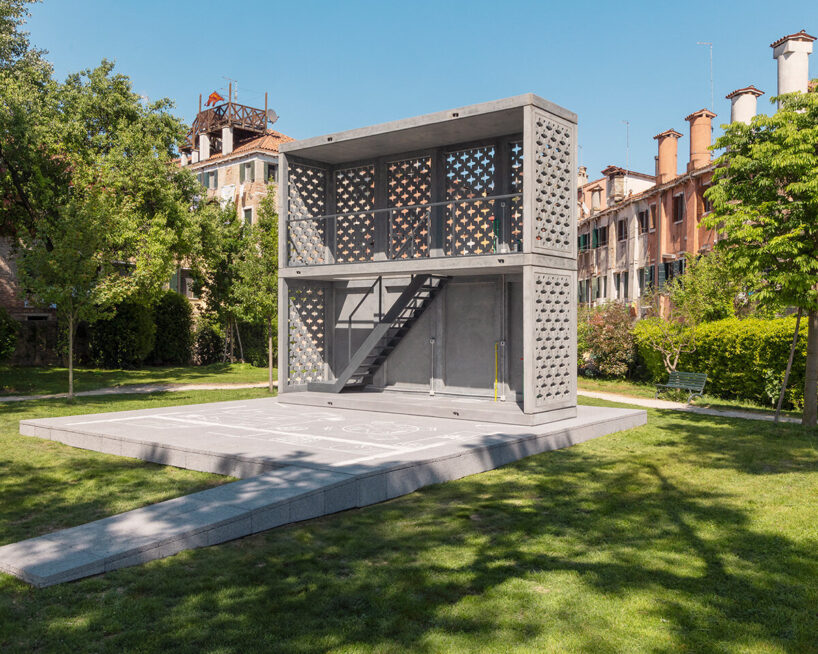
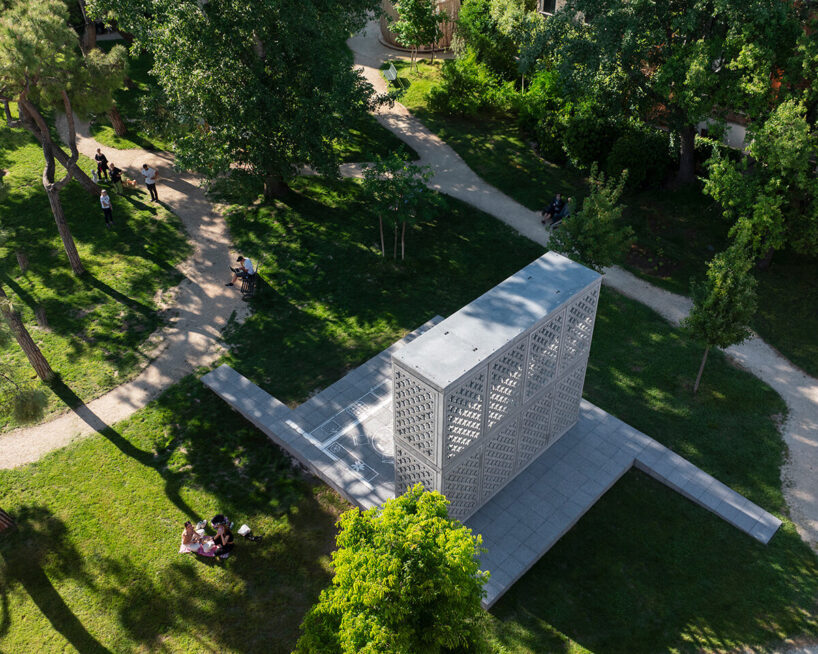
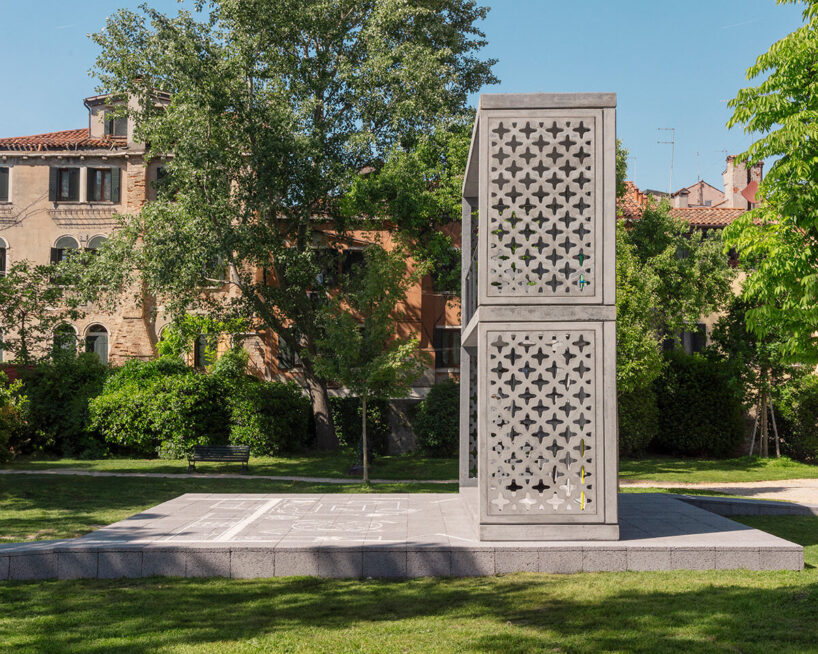
project info:
event: 19th International Architecture Exhibition of La Biennale Di Venezia
architect: ELEMENTAL (Alejandro Aravena)
construction: Holcim
photography: © designboom, © Celestia Studio
